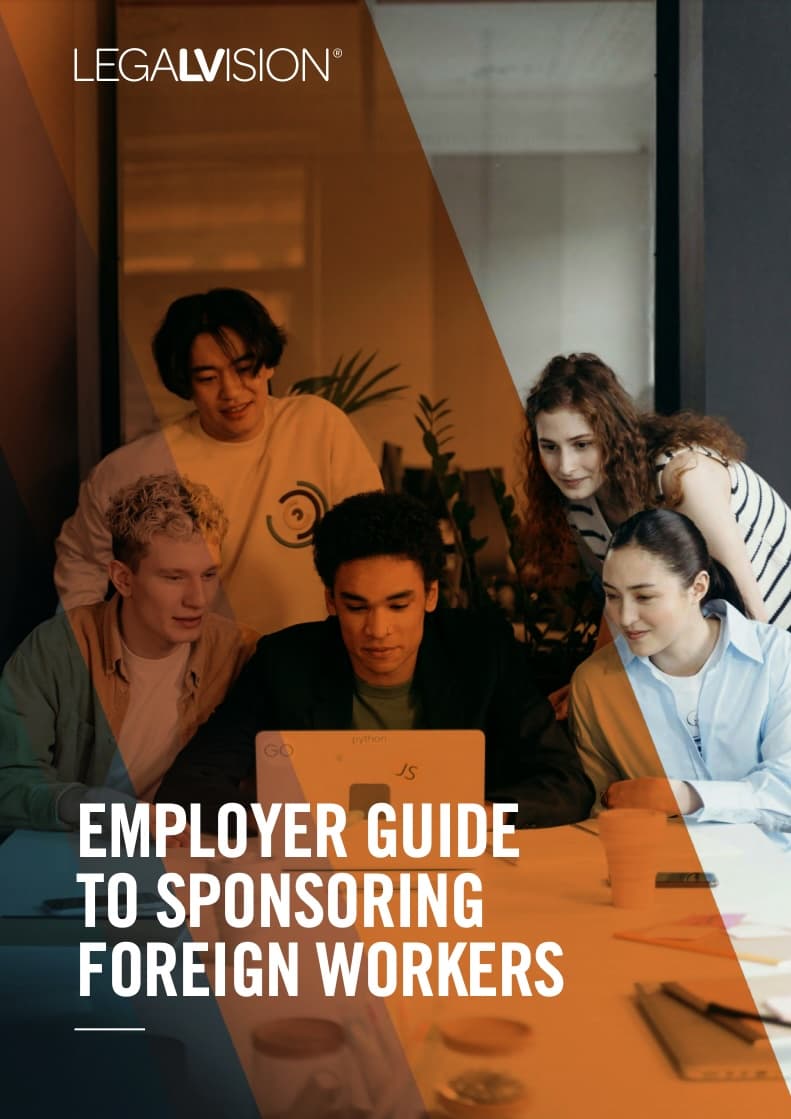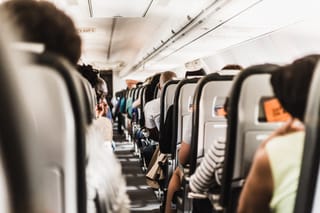You may be interested in visiting Australia for a holiday, a business trip, visiting family and friends, undertaking business visitor activities, or even short-term work (in specific circumstances). Australia has a variety of visitor visas to choose from, depending on your circumstances. Generally, you need to demonstrate that you intend to visit Australia temporarily, have not had a prior visa cancellation or refusal, have no debts to the Australian Government, and meet relevant health, biometrics, insurance and character requirements. This article will explain the visitor visas currently available in Australia.
Electronic Travel Authority Visa (Subclass 601)
The Electronic Travel Authority Visa (ETA) allows you to:
- undertake tourism activities;
- visit family and friends; and
- undertake some business visitor activities.
You may carry out any such activity for up to 3 months at a time within a 12-month period.
However, this visa does not allow you to work. Furthermore, you must hold an eligible passport to obtain this visa and must be outside Australia when you apply for and are granted the visa.
eVisitor Visa (Subclass 651)
The eVisitor visa allows you the same privileges as the ETA visa. In addition, you may study or undergo training in some circumstances. However, you cannot work. Once granted, you can stay for 3 months at a time within a 12-month period. This visa is only available to eligible passport holders. You must show that you have enough funds to support yourself during your stay and be able to depart Australia. In addition, you must be outside Australia when you apply for and are granted the visa.
Choosing between the 601 or 651 visa will primarily depend on your passport and the reason for your stay.
Continue reading this article below the formWork and Holiday Visa (Subclass 462)
There are first, second and third Work and Holiday visas. Each visa allows you to stay or leave and re-enter Australia for up to 12 months. The Work and Holiday visas enable you to undertake short-term work in Australia or study for up to four months whilst on holiday. If you are working, you can only work for a maximum of six months for any one employer at a time (unless you receive special permission stating otherwise). The six-month limitation resets for each visa. This means you may work for your current employer for an additional six months.
You must meet the following criteria to qualify for a working holiday visa:
- hold an eligible passport;
- be between 18 and 30 when you apply for each visa;
- not have dependents or family members on this visa; and
- demonstrate that you have enough funds to support your stay and departure from Australia.
There are key differences between each visa.
First Visa
For the first visa, you:
- cannot have previously come to Australia on a 462 or 417 visa;
- must be outside Australia when you apply and are granted the visa;
- must meet the education requirement, which requires you to hold a certain level of qualifications dependent on your country;
- must demonstrate functional English, which requires either holding a certain passport, completing a certain level of study in English, or sitting an English test with the requisite scores; and
- must provide a letter of support if you are from a certain country.
Second Visa
For your second visa, you can apply inside or outside Australia. However, whichever option you choose, you must remain there until the visa application has an outcome.
You must also meet the following criteria:
- hold or have previously held your first 462 visa and complied with all conditions on that visa;
- if applying within Australia, hold a substantive visa or one expiring within the last 28 days;
- enter Australia on that visa; and
- have completed at least 3 months of specified work whilst holding your first 462 visa.
Third Visa
You can apply for this visa inside or outside Australia but must remain there until you receive the visa application outcome.
You must also meet the following criteria:
- hold or have previously held your second 462 visa or associated bridging visa and have complied with all conditions on your prior 462 visas;
- if you are in Australia, hold a substantive visa or had it expire within the last 28 days; and
- complete at least 6 months of specified 462 work whilst holding your second 462 visa (the 3 months of work during your first visa cannot be double-counted).
Working Holiday Visa (Subclass 417)
This Working Holiday visa is almost identical to the above 462 visa, except you must hold a passport from an eligible country and complete specified 417 work for the second and third visas.
Whether you choose the 462 or 417 visa depends on which country you hold a passport in.
Visitor Visa (Subclass 600)
The Visitor visa encompasses several streams that serve different purposes.
1. Tourist Stream (Inside or Outside Australia)
These visas allow you to visit family and friends and engage in tourism activities, including cruises. You can study or train for up to three months, but you cannot work or undertake business activities.
Onshore applicants must be in Australia when they apply and receive the visa. Conversely, offshore applicants must be outside Australia when they apply and receive the visa. Furthermore, applicants must demonstrate they have enough funds to support their stay.
2. Sponsored Family Stream
This visa allows you to visit family members or friends, have a holiday or cruise and study or train for up to three months. However, you cannot work.
You must have an approved sponsor. Typically, this is a relative who is an Australian citizen or permanent resident.
You must be outside Australia when you apply and receive this visa.
3. Business Visitor Stream
This visa allows you to visit Australia for up to three months for business purposes. You must be outside Australia when you apply for and receive the visa.
Business activity involves the following:
- making general business or employment enquiries;
- contract negotiation;
- participating in conferences, seminars and trade fairs;
- conducting training and orientations; and
- participating in an official Government visit.
However, the following do not constitute business activities:
- working or providing services to an Australian business or organisation (if you need to do this, you will need a temporary work visa); and
- selling goods or services to the Australian public.
The business visitor stream allows you to undertake tourist activities whilst in Australia.
You must demonstrate that you have enough funds to support your stay.
4. Approved Destination Status Stream
This visa is only for citizens from some regions of China who intend to visit Australia as part of a pre-organised approved travel agent’s tour. If you wish to obtain this visa, you should contact an Approved Destination Status scheme travel agent.
5. Frequent Traveller Stream
This visa is only available to citizens of the People’s Republic of China who travel often to Australia for business or personal reasons. With this visa, you can travel to Australia for up to 3 months for each entry and 12 months total per 24-month period for up to 10 years.
When seeking this visa, you must:
- apply for each family member;
- be in the People’s Republic of China when you apply and outside Australia when your visa is granted; and
- demonstrate that you have enough funds to support your stay.
6. Transit Visa (Subclass 771)
This Transit visa allows you to transit through Australia for up to 72 hours between countries or 5 days if you are a Maritime Crew visa holder. You may not require this visa if you:
- are eligible;
- meet requirements for a subclass 444 visa (SCV); or
- hold a separate Australian temporary or permanent residence visa.
You must be outside Australia when you apply and are granted the visa.

Sponsoring overseas workers as an Australian business is complicated. Let us simplify it for you with this free employer guide.
Condition 8503 – No Further Stay
In a bid to reduce onshore student visa applications, ‘no further stay’ conditions have been increased on visitor visas.
When this condition is imposed on a visa, you are not able to apply for any new substantive visas while you are in Australia. After you leave Australia, you are able to apply for other visas.
You can request to waive the ‘no further stay’ condition if there is a major change in your circumstances that could not be prevented or stopped. This includes:
- medical issues preventing travel;
- natural disasters; and
- war or civil unrest in your home country.
Key Takeaways
Many different types of visas are available to visit Australia, catering to various circumstances. Choosing the correct visa for your situation is crucial to ensure the best prospects of a visa grant and allow you to undertake your intended activities lawfully.
If you require assistance choosing the right visa, our experienced immigration lawyers can assist as part of our LegalVision membership. For a low monthly fee, you will have unlimited access to lawyers to answer your questions and draft and review your documents. Call us today on 1300 544 755 or visit our membership page.
Frequently Asked Questions
A substantive visa is any visa except a bridging visa, criminal justice visa or enforcement visa. Apart from these, all other visas are substantive visas.
Generally, if your Visitor Visa (Subclass 600) includes Condition 8503 (No Further Stay), you cannot apply for another substantive visa while in Australia. However, if you do not have Condition 8503 on your visa, you may be able to apply for another visa while in Australia. It is important to seek professional advice to understand your options and the best course of action based on your specific situation.
We appreciate your feedback – your submission has been successfully received.











